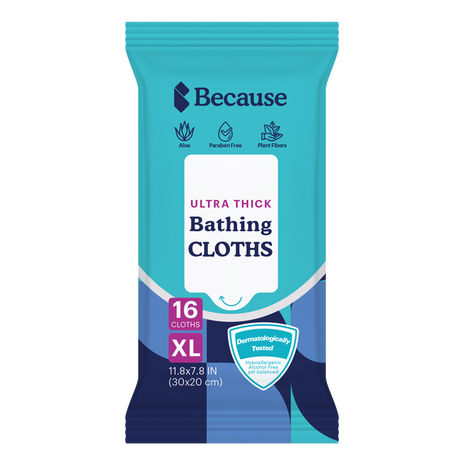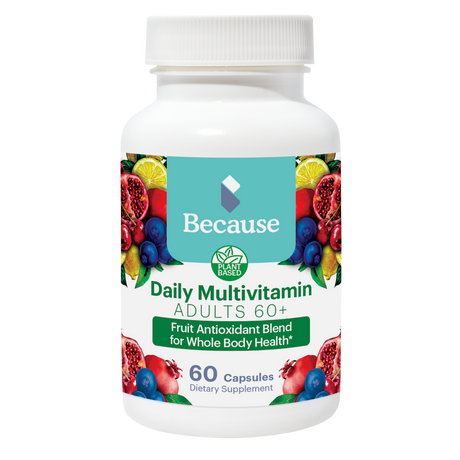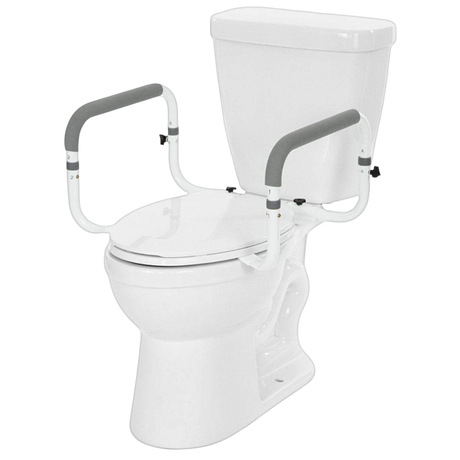As temperatures rise, understanding the nuances of heat tolerance becomes increasingly crucial, especially for our aging population. Every year, 80% of the heat-related deaths in the US are over the age of 60. And according to a new report, worldwide heat-related deaths for adults over 64 are projected to increase by 370% through the middle of the century if the temperatures keep rising.
In this blog, we delve into the science behind heat sensitivity in elderly adults, exploring the factors influencing their susceptibility to heat-related illnesses. From identifying risk factors to recognizing signs of heat stress, we'll equip you with practical tips and strategies for managing heat exposure effectively. Join us as we navigate through the essential aspects of heat tolerance in elderly individuals, empowering both seniors and caregivers alike to stay safe and cool in warmer climates.
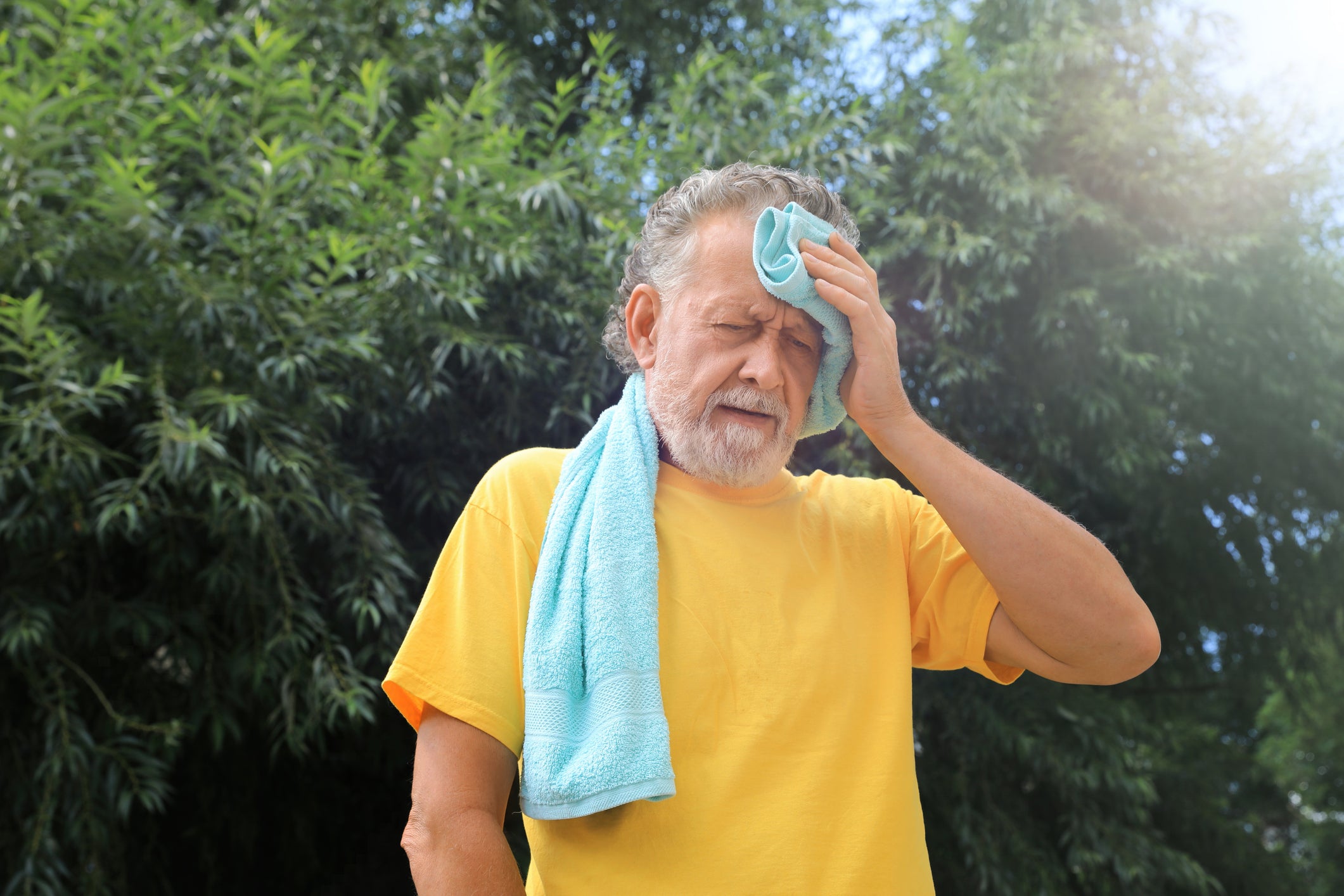
Understanding Heat Tolerance in Elderly Adults
Elderly individuals often experience physiological changes that impair their body's ability to regulate temperature effectively, making them more vulnerable to heat-related illnesses such as heat exhaustion and heat stroke. Additionally, many elderly adults may live alone or in care facilities where access to adequate cooling systems and hydration may be limited, heightening the importance of understanding and mitigating heat-related risks.
Exploring the Dynamics of Heat Tolerance
The dynamics of heat tolerance encompass a complex interplay of physiological, environmental, and individual factors. Physiologically, the body employs mechanisms such as sweating, vasodilation (expansion of blood vessels), and increased respiration to dissipate heat and maintain a stable internal temperature.
Environmental factors such as high humidity, prolonged exposure to sunlight, and lack of adequate ventilation can exacerbate heat stress, especially in individuals living in urban areas or confined spaces with limited access to cooling systems. Lifestyle factors like dehydration, alcohol consumption, and physical inactivity can also exacerbate heat sensitivity.
Moreover, individual characteristics such as hydration status, acclimatization to hot weather, and genetic predispositions influence an individual's ability to tolerate heat.
Factors Influencing Heat Sensitivity in the Elderly
As individuals age, the physiological mechanisms may become less efficient due to changes in sweat gland function, decreased blood flow to the skin, and diminished sensitivity to temperature changes. Additionally, underlying health conditions like cardiovascular disease, diabetes, and medications such as diuretics can further compromise heat tolerance by altering fluid balance, electrolyte levels, and cardiovascular function.
Additionally, environmental impacts may have a greater impact on elderly adults with weaker physiological systems, poor housing, and limited support systems.
Understanding these dynamics is crucial for implementing preventive measures, providing appropriate care, and promoting resilience in elderly adults, particularly during periods of extreme heat or heat waves. By addressing these multifaceted dynamics, communities, caregivers, and healthcare providers can better protect the health and well-being of elderly individuals in hot climates.

The Science Behind Heat Sensitivity
Heat sensitivity is rooted in the body's intricate thermoregulatory system, where specialized mechanisms strive to maintain optimal internal temperature. As individuals age, changes in sweat gland function, decreased blood flow to the skin, and alterations in hormonal regulation contribute to reduced heat dissipation efficiency, rendering elderly adults more susceptible to heat-related stress and illnesses.
Age-Related Changes in Thermoregulation
Age-related changes in thermoregulation profoundly influence how elderly individuals respond to heat. With advancing age, the body's ability to regulate temperature becomes less efficient due to alterations in sweat gland activity, reduced blood flow to the skin, and diminished sensitivity to temperature changes.
Elderly adults may experience a decline in the body's ability to produce sweat, which is essential for dissipating heat through evaporation. Additionally, age-related changes in the hypothalamus, the body's temperature-regulating center, can impair the perception of heat and the initiation of cooling responses. These physiological shifts make elderly individuals more susceptible to heat-related conditions such as heat exhaustion and heat stroke, emphasizing the importance of tailored interventions and proactive measures to mitigate heat stress in this vulnerable population.
Impact of Chronic Health Conditions on Heat Tolerance
Chronic health conditions exert a significant impact on heat tolerance, particularly in elderly adults who may already face physiological challenges. Conditions such as cardiovascular disease, diabetes, and respiratory disorders can exacerbate heat sensitivity by compromising the body's ability to regulate temperature effectively.
For instance, individuals with cardiovascular issues may experience reduced blood flow to the skin, hindering heat dissipation, while those with diabetes may have impaired sweating mechanisms due to autonomic neuropathy.
Moreover, medications used to manage these conditions, such as diuretics and beta-blockers, can further disrupt fluid balance and exacerbate dehydration, amplifying susceptibility to heat-related complications. The presence of chronic health conditions underscores the importance of tailored heat management strategies and close monitoring to mitigate risks and safeguard the well-being of elderly individuals, particularly during periods of elevated temperatures.
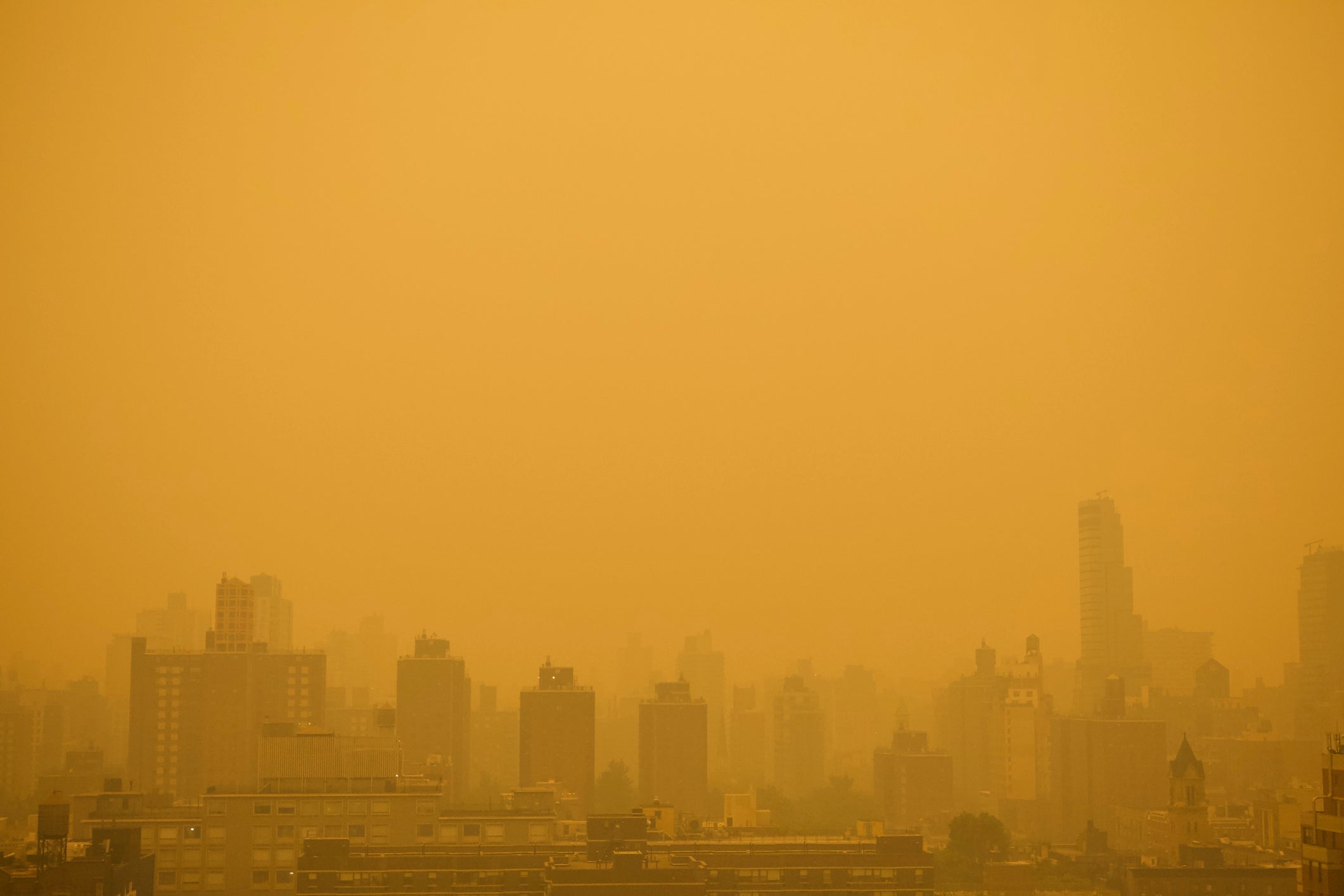
Identifying Risk Factors
Identifying risk factors for individuals susceptible to heat-related complications is paramount for targeted interventions and timely preventive measures. By recognizing vulnerable populations, such as the elderly, individuals with chronic illnesses, and those living in urban heat islands, proactive strategies can be implemented to mitigate the adverse effects of heat exposure, thereby reducing the incidence of heat-related illnesses and fatalities.
Recognizing Vulnerable Populations
Populations vulnerable to heat-related complications encompass a diverse range of individuals, each facing unique risk factors. Elderly adults, especially those aged 65 and older, are particularly susceptible due to age-related physiological changes that impair thermoregulation and increase susceptibility to dehydration. Individuals with chronic medical conditions such as cardiovascular disease, diabetes, respiratory disorders, and mental health issues are also at heightened risk, as these conditions can compromise the body's ability to cope with heat stress.
Furthermore, socioeconomic factors, including poverty, lack of access to air conditioning, and inadequate housing, exacerbate vulnerability to heat-related illnesses, particularly among marginalized communities.
The effect of not having air conditioning can be seen in past heat waves throughout Europe. 90% of US households have air conditioning, while only 49% of Italian households, 38% of Spanish households, and 13% of German households have it. This lack of indoor cooling has led to major problems in recent years due to severe heat waves. In 2022, heat waves killed 61,700 people across Europe with 18,100 of those in Italy alone. For comparison, the US saw 1,714 heat-related deaths in 2022 according to the CDC.
Identifying and prioritizing these vulnerable populations is critical for implementing targeted interventions, increasing public awareness, and fostering community resilience to mitigate the impact of extreme heat events.
Assessing Environmental Conditions
Assessing relevant environmental conditions is essential for understanding the potential risks posed by heat exposure and implementing effective preventive measures. Monitoring temperature and humidity levels, especially during hot weather periods, provides valuable insights into the likelihood of heat-related stress.
Additionally, evaluating factors such as air pollution levels, wind speed, and sun exposure duration contributes to a comprehensive understanding of environmental conditions. Furthermore, identifying urban heat islands, areas with elevated temperatures due to human activities and infrastructure, helps pinpoint regions where heat-related risks may be heightened.
By leveraging weather forecasts, heat advisories, and geographic information systems (GIS) mapping, stakeholders can gain actionable intelligence to inform public health interventions, prioritize resource allocation, and protect vulnerable populations from the adverse effects of extreme heat.
Finally, it’s important to evaluate the environment in which the vulnerable population or individual lives. Does their home have adequate air flow? Does it have working air conditioning? Is there an elevator to reach their apartment or do they need to walk up flights of stairs? All this information contributes to the specific circumstances of the individual you are caring for and the populations affected.

Signs of Heat Stress in Elderly Individuals
Heat stress in elderly individuals poses a significant health risk, as age-related physiological changes diminish the body's ability to regulate temperature effectively. Excessive heat can lead to dehydration, heat exhaustion, and heat stroke in the elderly, emphasizing the importance of proactive measures such as staying hydrated, seeking cooler environments, and monitoring for signs of heat-related illness.
Recognizing Symptoms of Heat Exhaustion
Heat exhaustion manifests through various symptoms, often signaling the body's struggle to regulate its temperature in hot environments. Common signs include:
- Profuse sweating
- Weakness
- Fatigue
- Dizziness
- Nausea
- Headaches
- Rapid heartbeat
- Clammy skin
- Muscle cramps
- Fainting
Understanding the Dangers of Heat Stroke
It's crucial to recognize these symptoms promptly, as untreated heat exhaustion can escalate to heat stroke, a life-threatening condition. If someone displays symptoms of heat exhaustion, it's vital to move them to a cooler environment, offer fluids, and seek medical attention promptly to prevent further complications. If left untreated, heat stroke can cause:
- Damage to vital organs
- Confusion
- Disorientation
- Seizures
- Coma
- Irreversible tissue and cell damage
- Multi-organ failure
- Death

Practical Tips for Managing Heat Exposure
Luckily, there are many quick and easy ways to prevent heat stroke and manage your exposure to the sun.
Staying Cool: Effective Cooling Strategies
Effective cooling strategies are essential for mitigating the risks of heat-related illnesses, particularly in vulnerable populations like elderly adults. These strategies encompass various approaches, including:
- Staying in air conditioned spaces during the hottest parts of the day
- Taking cool showers or baths
- Wetting clothing with cool water
- Applying cold packs to pulse points
- Creating shaded areas outdoors
- Using reflective materials to deflect sunlight and maintain cooler environments
Implementing these cooling strategies not only helps prevent heat stress but also ensures the well-being and safety of individuals during periods of elevated temperatures.
Hydration Essentials for Elderly Adults
Hydration is crucial for maintaining optimal health and well-being, especially among elderly adults who may be more susceptible to dehydration due to age-related changes in thirst perception and kidney function.
Encouraging elderly adults to drink water regularly throughout the day, even if they don't feel thirsty, is essential for preventing dehydration. Offering beverages such as water, herbal teas, and diluted fruit juices can help increase fluid intake while limiting sugary and caffeinated drinks that can contribute to dehydration.
It's also important to monitor fluid intake, particularly during hot weather or when engaging in physical activity, and encourage replacing fluids lost through sweating. Additionally, incorporating water-rich foods like fruits, vegetables, and soups into the diet can contribute to overall hydration levels. By prioritizing hydration and adopting these essential practices, elderly adults can better maintain their health and resilience against heat-related illnesses.

Empowering Elderly Individuals and Caregivers
Building support networks for heat-related emergencies is crucial for ensuring swift assistance and intervention in times of need, especially for vulnerable populations like the elderly. These networks can encompass various stakeholders, including caregivers, neighbors, community organizations, and healthcare providers, who can collaborate to monitor individuals at risk and respond promptly to signs of distress. Establishing communication channels, such as phone trees or community alerts, enables quick dissemination of information and coordination of resources during heat waves or other extreme weather events.
Additionally, training community members in basic first aid and heat-related emergency response equips them with the skills to provide immediate assistance until professional help arrives. By fostering strong support networks, communities can enhance resilience, minimize the impact of heat-related emergencies, and ensure the safety and well-being of all residents, particularly those most vulnerable to heat stress.
Sources:
Dutchen, Stephanie. (2021). The Effects of Heat on Older Adults. Harvard Medicine Magazine. Retrieved from https://magazine.hms.harvard.edu/articles/effects-heat-older-adults#:~:text=More%20than%2080%20percent%20of,the%20journalism%20resource%20Climate%20Central.
Tedeschi, Christopher. (2022, Jun. 29). Extreme Heat Is Bad for Your Health. Columbia University Irving Medical Center. Retrieved from https://www.cuimc.columbia.edu/news/extreme-heat-bad-your-health#:~:text=Heat%20can%20cause%20some%20degree,heat%20illness%2C%20especially%20heat%20stroke.
United States Environmental Protection Agency. (2024, Jan. 22). Reduce Urban Heat Island Effect. Retrieved from https://www.epa.gov/green-infrastructure/reduce-urban-heat-island-effect#:~:text=%22Urban%20heat%20islands%22%20occur%20when,heat%2Drelated%20illness%20and%20mortality.
Balmain BN, Sabapathy S, Louis M, Morris NR. Aging and Thermoregulatory Control: The Clinical Implications of Exercising under Heat Stress in Older Individuals. Biomed Res Int. 2018 Aug 2;2018:8306154. doi: 10.1155/2018/8306154. PMID: 30155483; PMCID: PMC6098859.
Cui J, Sinoway LI. Cardiovascular responses to heat stress in chronic heart failure. Curr Heart Fail Rep. 2014 Jun;11(2):139-45. doi: 10.1007/s11897-014-0191-y. PMID: 24599558; PMCID: PMC4042428.
Dalton, Matthew (2023, Sept. 9). Hotter Summers Kill Thousands in a Europe With Scant Air Conditioning. The Wall Street Journal. Retrieved from https://www.wsj.com/world/europe/hotter-summers-kill-thousands-in-a-europe-with-scant-air-conditioning-9c8ab5d8
Centers for Disease Control and Prevention. (2017, Sept. 1). Extreme Heat: A Prevention Guide to Promote Your Personal Health and Safety. Retrieved from https://www.cdc.gov/disasters/extremeheat/warning.html

